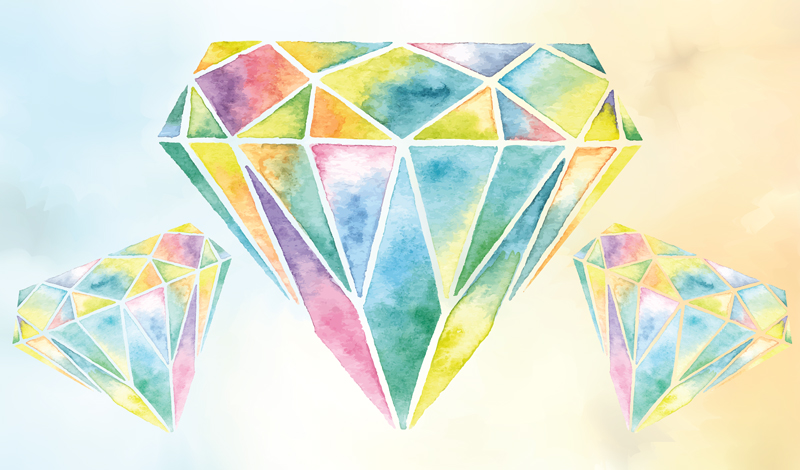This series highlights how Buddhism can enhance daily living. As Nichiren Daishonin says: “When the skies are clear, the ground is illuminated. Similarly, when one knows the Lotus Sutra, one understands the meaning of all worldly affairs.”[1]
I have always felt a gift diamond shines so much better than one you buy for yourself.” These words are attributed to Mae West, the 20th-century actress, comedian, author and fearless advocate for women’s and LGBTQ rights.
West often expressed her love of diamonds, but here, talking about a “gift diamond,” she points to a more profound treasure: enriching another.
Since primitive times, humans have valued gems and jewels. That may stem from a primordial impulse, like that which draws some birds and fish to sparkly objects. In ancient civilizations, people with enough means wore rare and beautiful gems to demonstrate their status and power, a behavior that maybe hasn’t changed much over the millennia.[2]
Gems of the Lotus Sutra
Secular and religious languages and literature employ words like jewel, gem and treasure figuratively to describe anything of great value, including people, ideas, teachings or experiences.
In Buddhist sutras, they often symbolize the wisdom or teachings of a Buddha.
The Lotus Sutra describes many gems, treasures and various precious stones and materials and relates stories in which they hold deep symbolism.
In the parable of the Jewel in the Robe, for instance, a poor man discovers a jewel that a friend had sewn into his robe years before. The poor man realizes he has been rich all along. The jewel symbolizes the Buddha nature we all possess but tend to be unaware of.
In the parable of the Bright Jewel in the Topknot, a king who keeps a precious gem in his hair presents it to a soldier who has distinguished himself most highly in battle. Here, the jewel represents the Lotus Sutra, which the Buddha waited a long time to preach, bestowing this teaching on those who would struggle to spread it in the evil age after his passing.
The Lotus Sutra’s 11th chapter describes a magnificent treasure tower that emerges from the earth as being adorned with seven kinds of treasures, which represent the virtues associated with Buddhist practice.
The Jewel of Buddhahood
In “Devadatta,” the sutra’s 12th chapter, the dragon king’s daughter hands the Buddha a beautiful, precious jewel equal in value to all the treasures in the entire universe.
Nichiren Daishonin suggests that the jewel when still in the dragon girl’s hand represents the Mystic Law and her limitless inner potential for enlightenment. Her handing it to the Buddha symbolizes the Buddhist practice that enables us to fully actualize that potential.
Ikeda Sensei points out that the jewel also represents the dragon girl’s life, which becomes one with the Buddha when she offers it to him. He also says:
When we embrace the Mystic Law and make our innate Buddhahood shine brightly, our unique qualities blossom to their fullest. Your life, my life, is precious and worthy of respect. So let us each help one another shine our brightest in our own way. That is the practice of the Mystic Law.[3]
We each possess the jewel of Nam-myoho-renge-kyo and the treasure of our Buddha nature, our potential for absolute happiness. When we share it with another person, giving a “gift jewel” so to speak, our own lives will come to shine all the brighter.
—Prepared by the SGI-USA Study Department
You are reading {{ meterCount }} of {{ meterMax }} free premium articles

